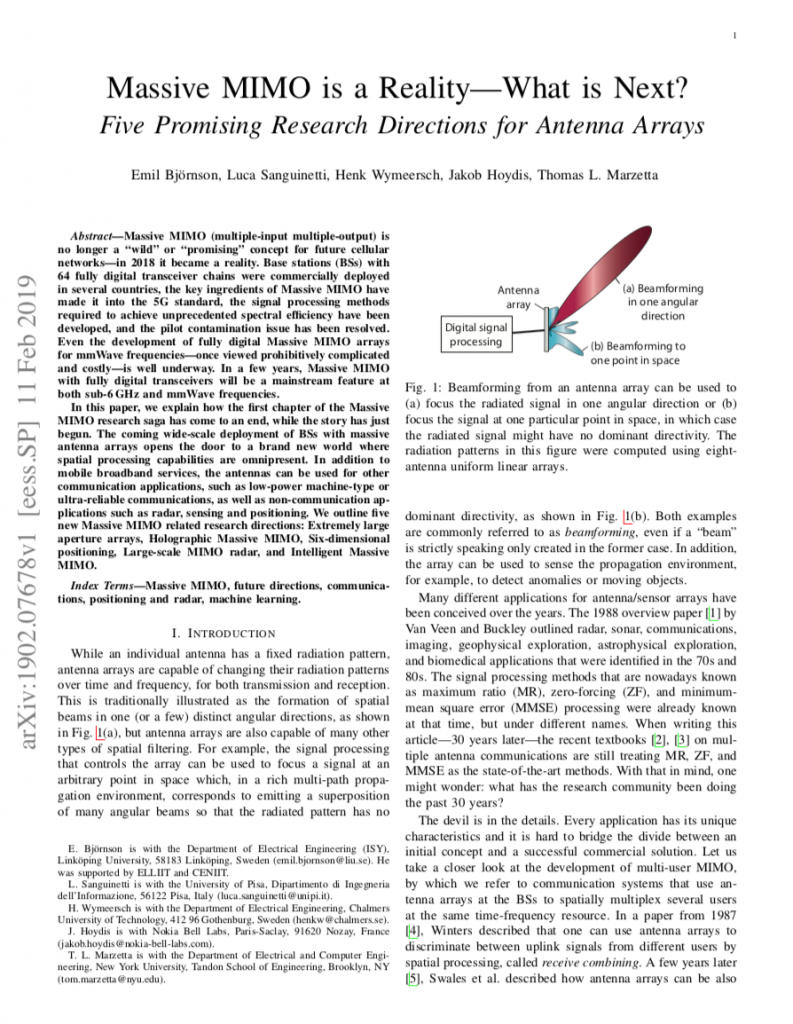
Ever since I finished the writing of the book Massive MIMO Networks: Spectral, Energy, and Hardware Efficiency, I have felt that I’m somewhat done with my research on conventional Massive MIMO. The spectral efficiency, energy efficiency, resource allocation, and pilot contamination phenomenon are well understood by now. This is not a bad thing—as researchers, we are supposed to solve the problems we are analyzing. But it means that this is a good time to look for new research directions. It should preferably be something where we can utilize our skills as Massive MIMO researchers to do something new and exciting!

With this in mind, I gathered a team consisting of myself, Luca Sanguinetti, Henk Wymeersch, Jakob Hoydis, and Thomas L. Marzetta. Each one of us has written about one promising new direction of research related to antenna arrays and MIMO, including the background of the topic, our long-term vision, and pertinent open problem. This resulted in the paper:
Massive MIMO is a Reality – What is Next? Five Promising Research Directions for Antenna Arrays
You can find the preprint on arXiv.org or by clicking on the name of the paper. I hope that you will find it as interesting to read as it was for us to write!

What about also Non-Coherent communications, where we rely on the gains of large number of antennas deployed to compensate for the channel knowledge?
I believe that with non-coherent transmission, it is better to serve each user only by the closest antenna than with a multitude of antennas. It is first when you do coherent transmission from many antennas that you will see gains, even if those antennas are distributed. This is the reason why cell-free Massive MIMO beats small cells in the following paper: https://arxiv.org/pdf/1602.08232